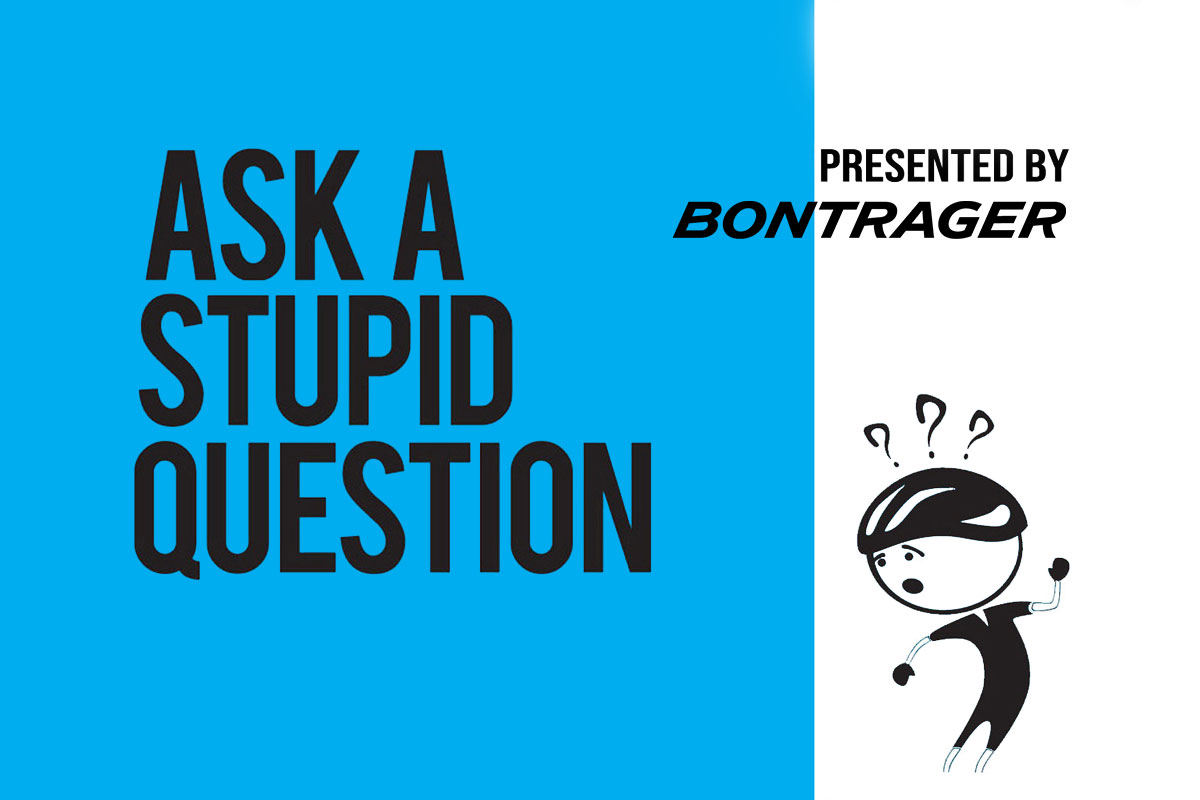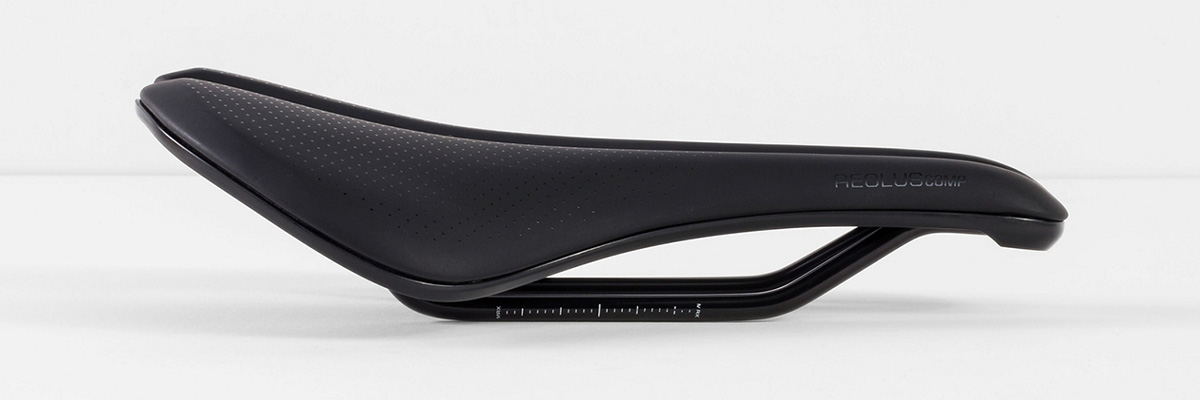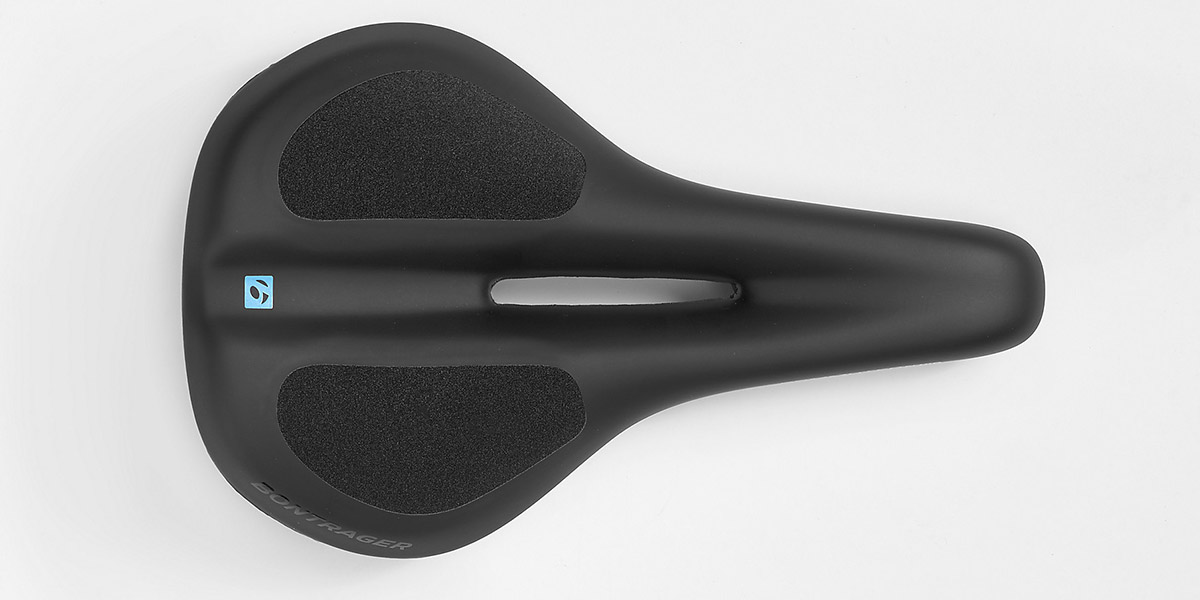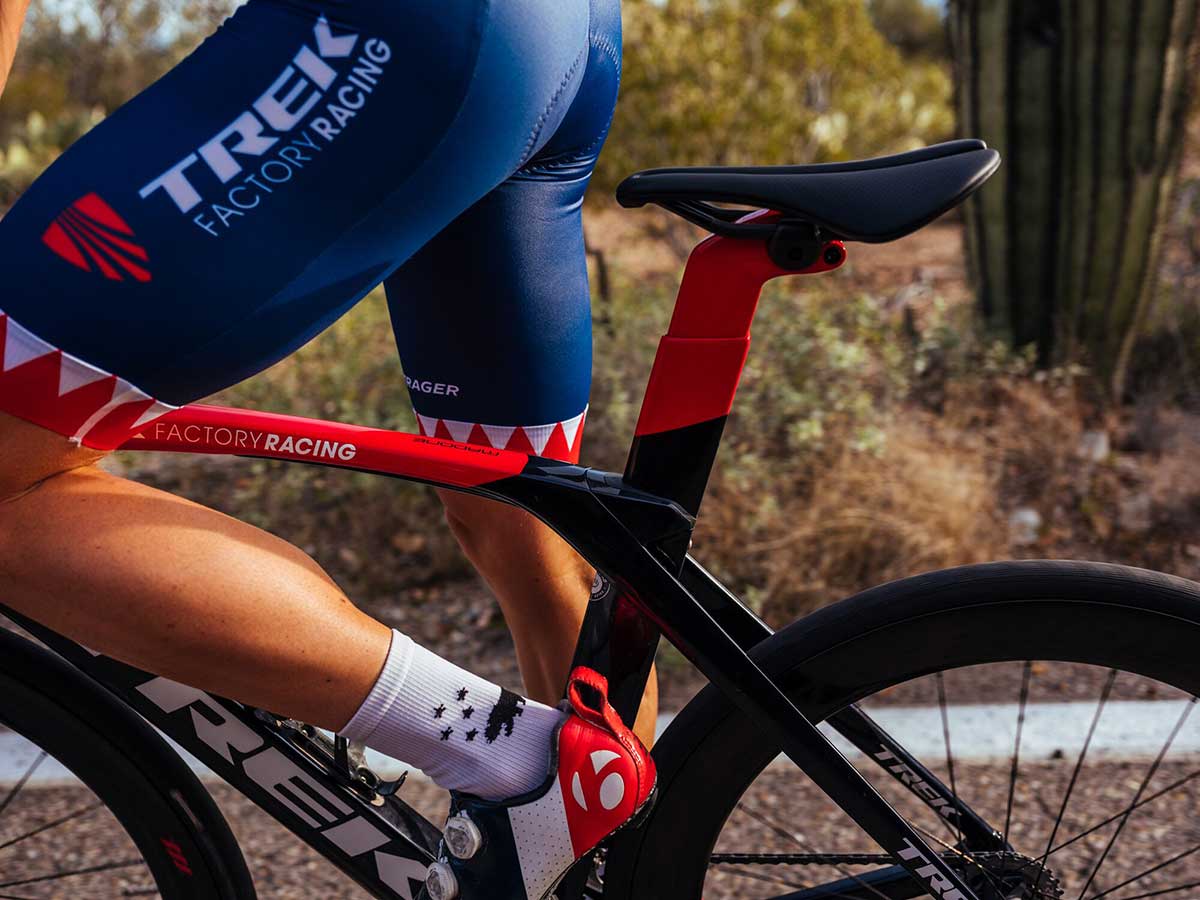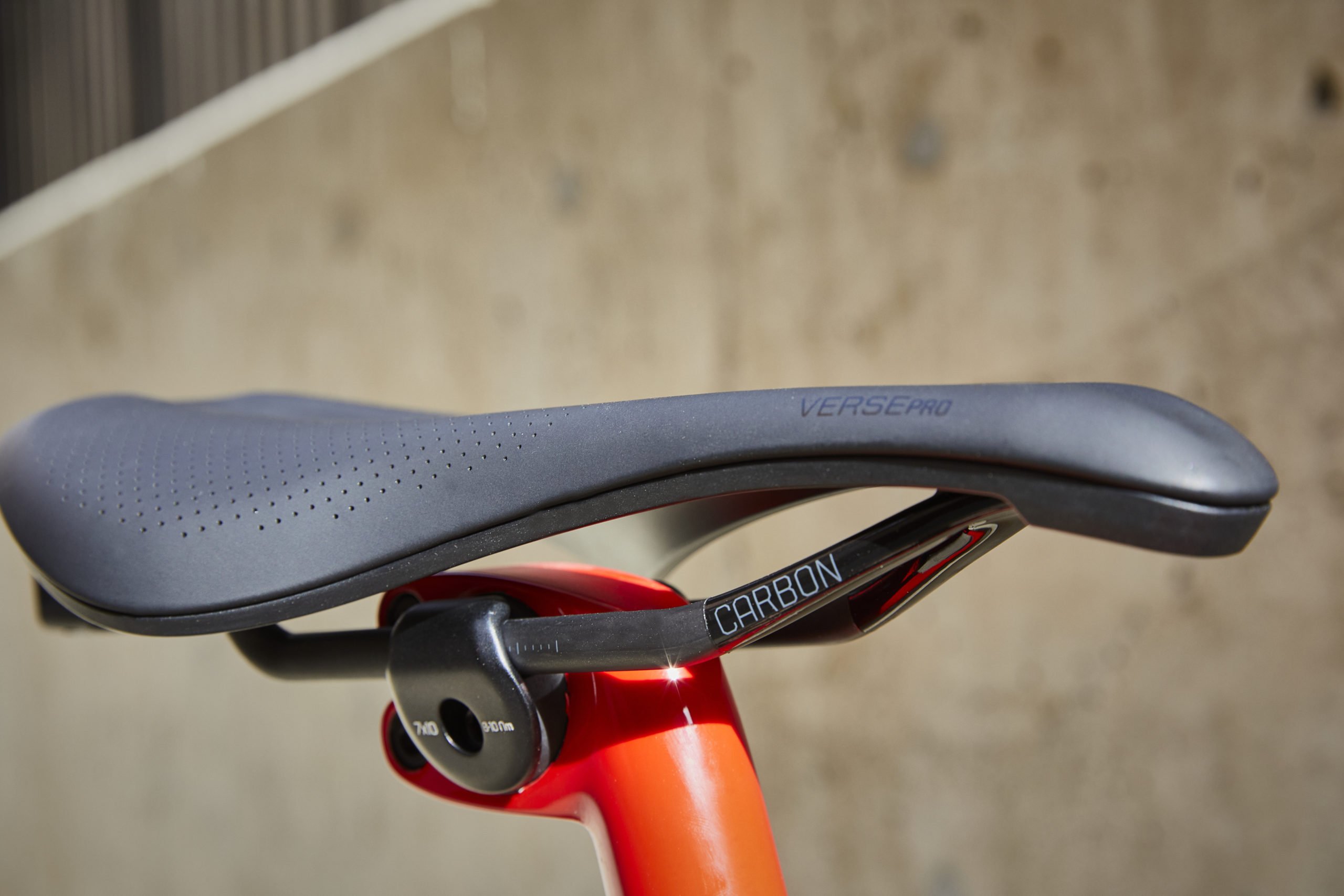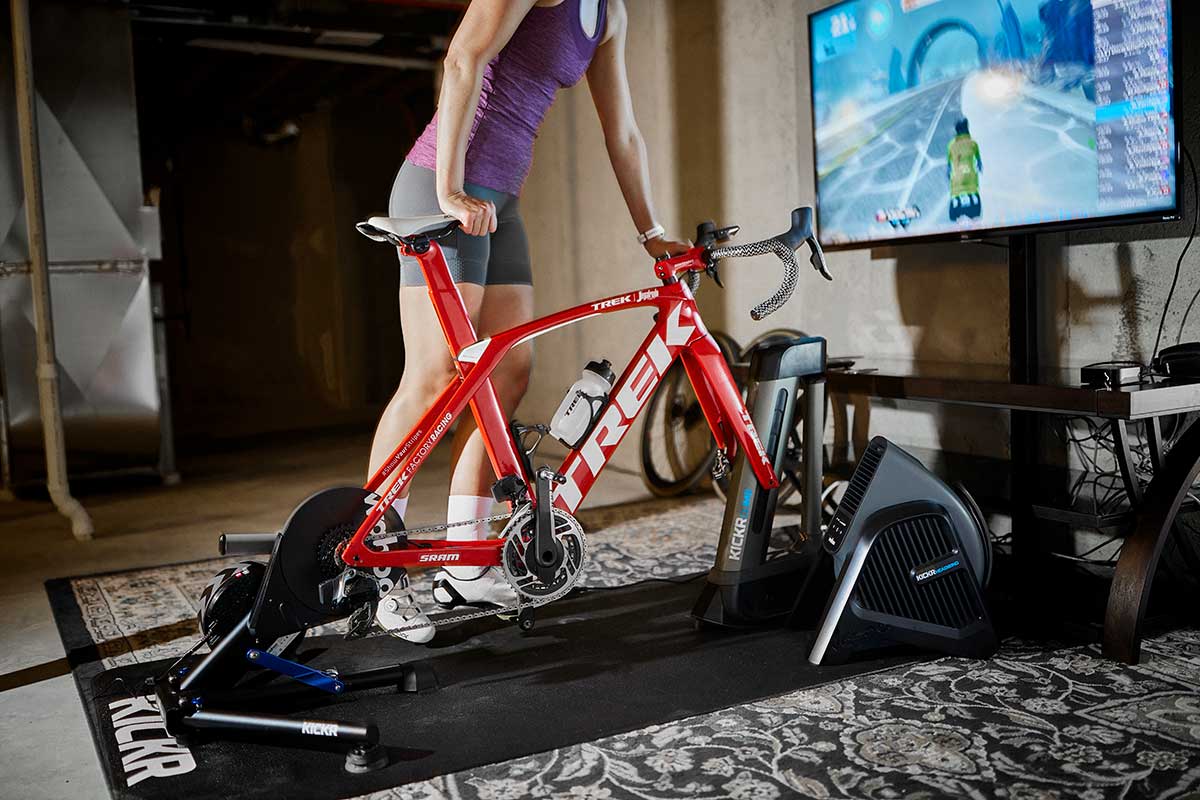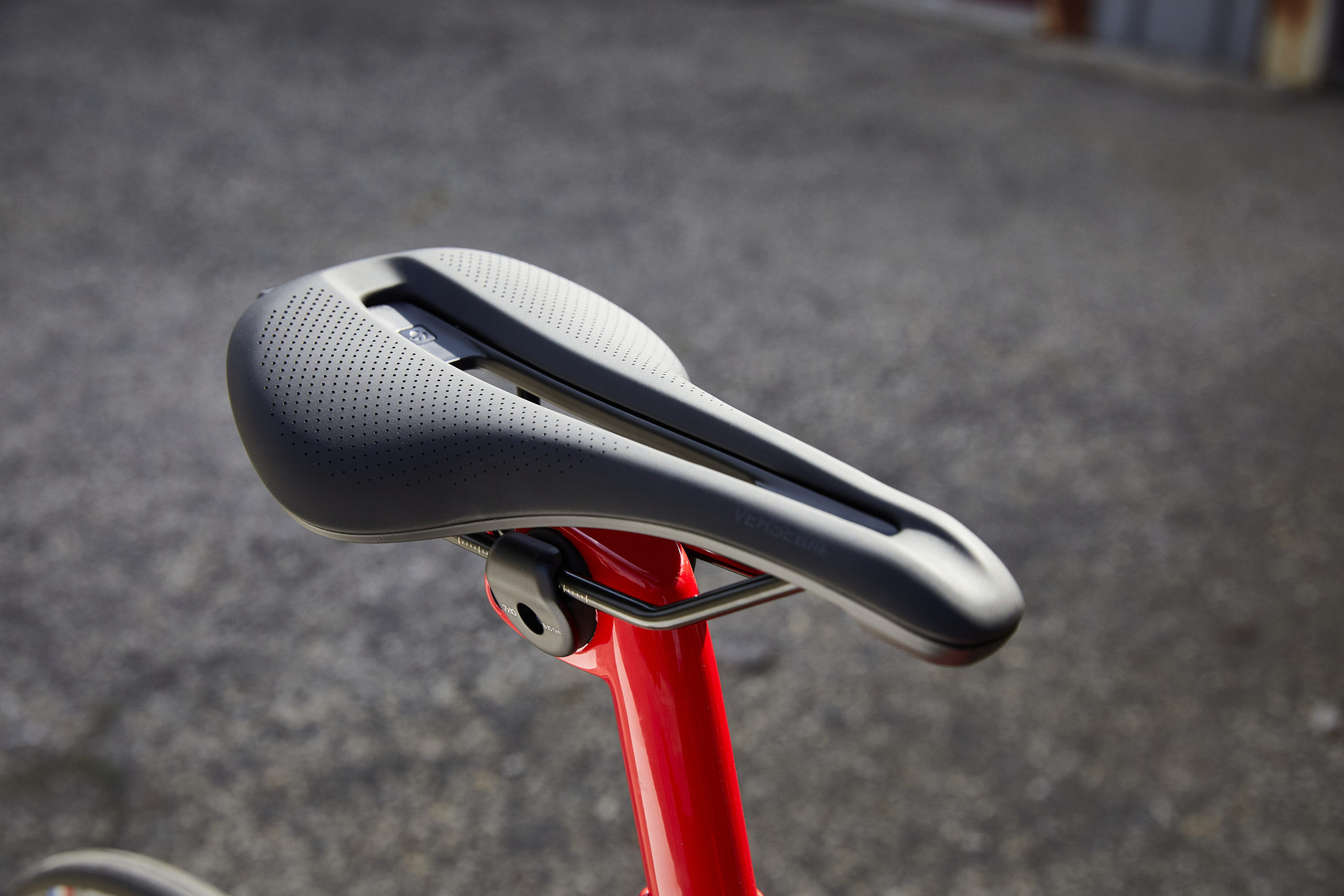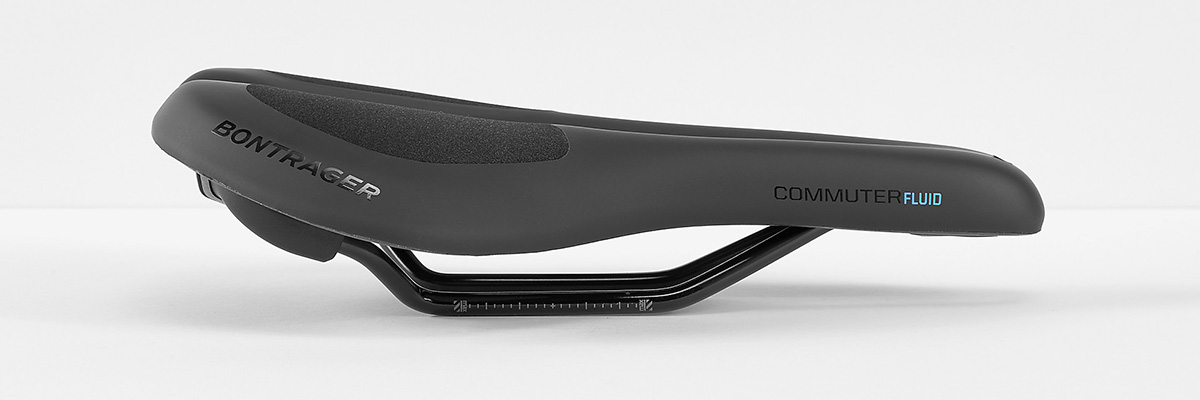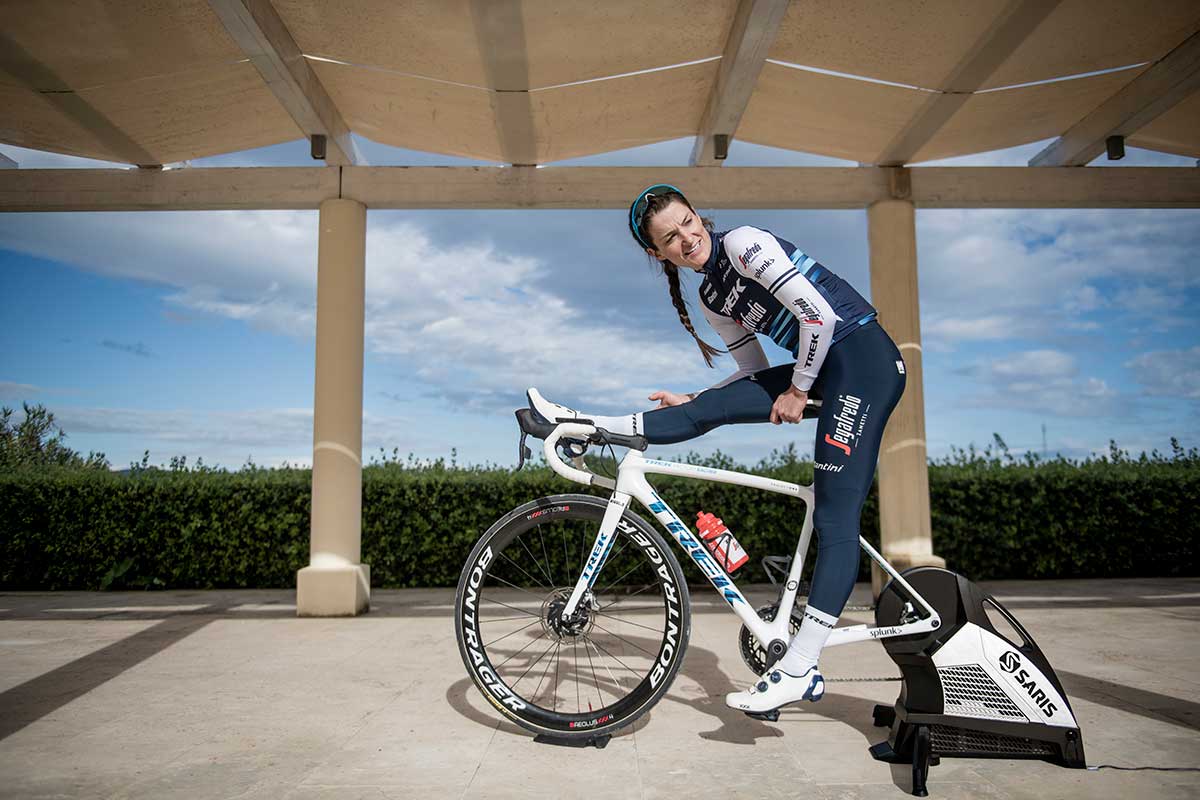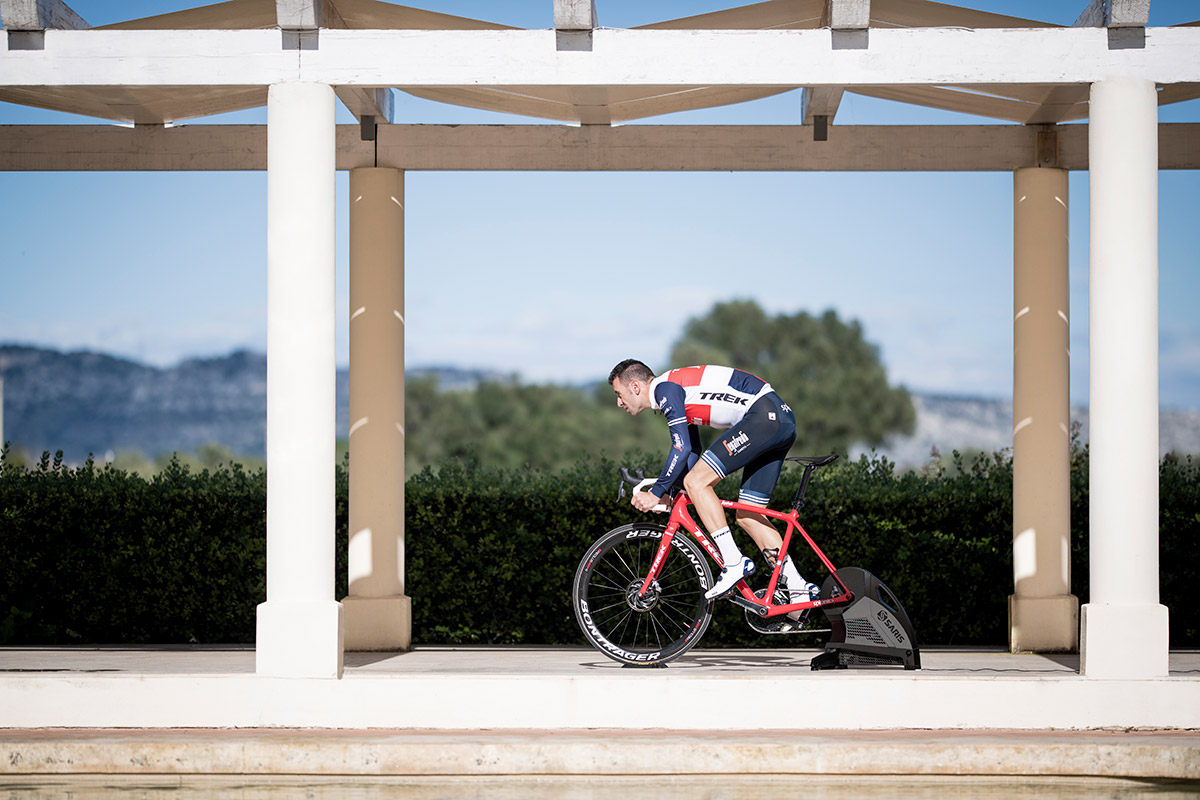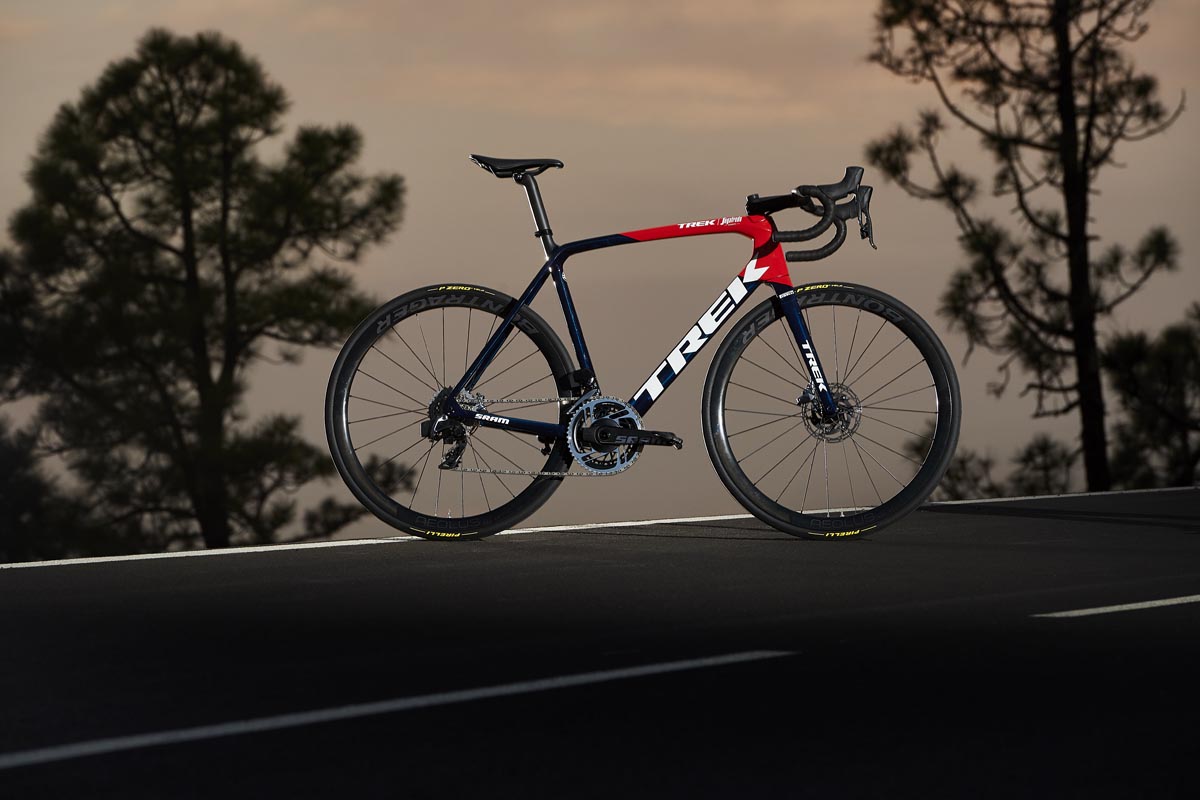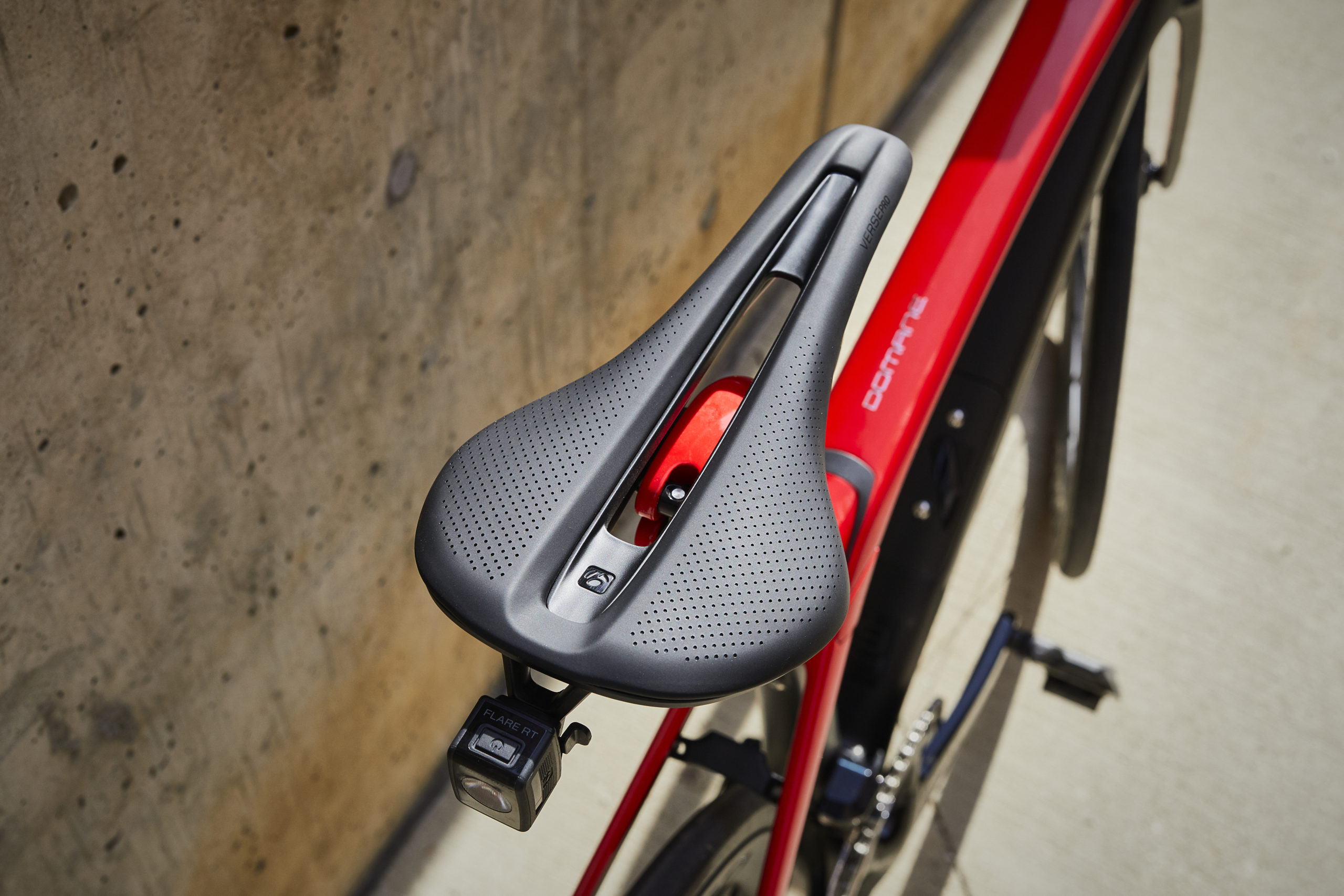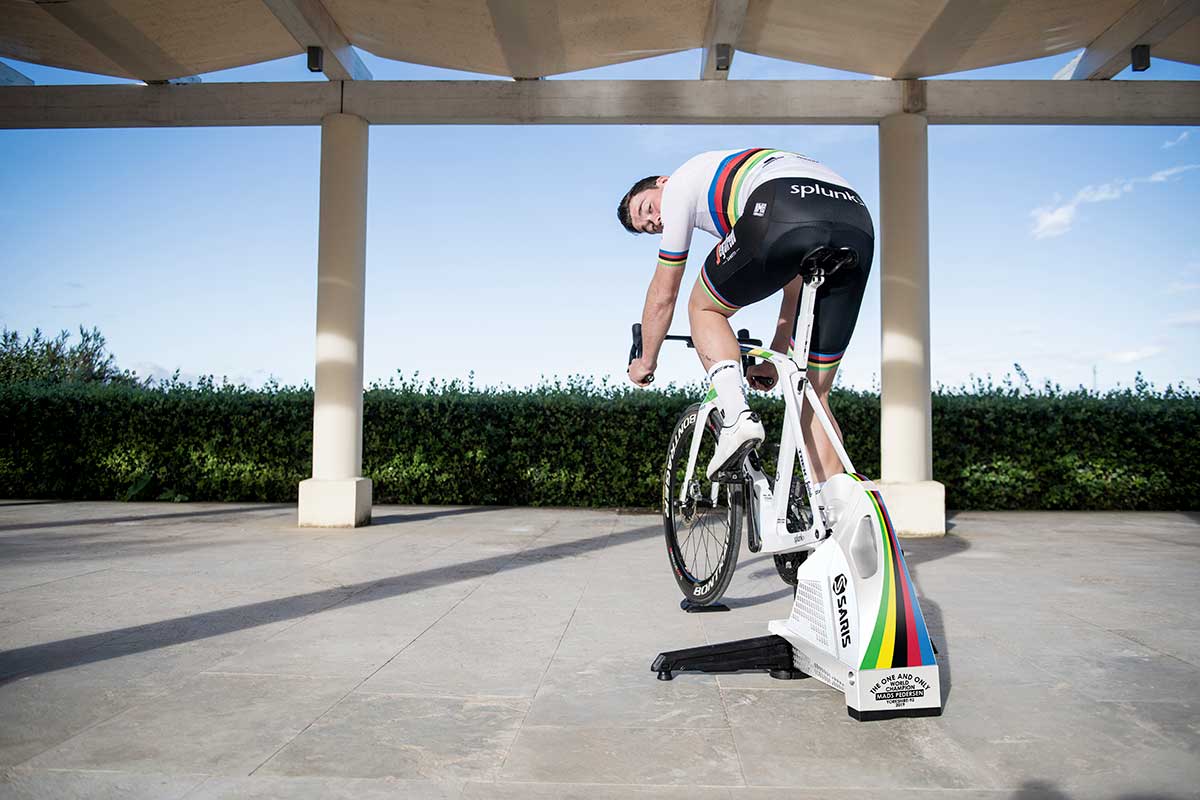We know, there’s no such thing as a stupid question. But there are some questions you might not want to ask your local shop or riding buddies. AASQ is our weekly series where we get to the bottom of your questions – serious or otherwise. This time we grill Bontrager on optimal saddle positioning for indoor training! Hit the link at the bottom of the post to submit your own question.
You asked, Bontrager delivered! Here we have their answers to all your saddle fit questions concerning indoor trainer setup. This week’s contributors are as follows:
- Kyle Russ – Senior Biomechanical Engineer on the Analysis Team
- Kayla O’Neill – Product Design Engineer on the Bontrager Saddle and Accessories Team
- Alan Baryudin – Mechanical Engineer on the Bontrager Saddle and Accessories Team
- Jason Schuster – Product Design Engineer on the Bontrager Saddle and Accessories Team
Q&A: Bontrager answer your indoor trainer saddle Qs
What is the best saddle for indoor cycling? I had the Aeolus Elite at various tilt angles but found the Arvada more comfortable on longer rides. Would a bigger/softer saddle be more comfortable without interrupting your workout?
Kyle – The best saddle is one that is most comfortable for you. That is going to be different for everybody, but as a generality, a softer saddle could be more comfortable on the trainer because of the static nature of indoor cycling compared to riding outside. The key with choosing a softer saddle is making sure that the pelvic region isn’t sinking into the saddle so much that it induces unwanted pressure on the perineal (male and female) region. And always make sure to get a good fit.
Kayla – I would recommend a softer saddle since the bike does not move with pedal strokes. Since the saddle won’t move, you want something softer so you’re not slamming into a hard, stationary object. Moving to a Comp (lower level model) trim usually gives a little more padding and comfort. You maybe also want to use something that is narrower so there is less interference with thighs/groin.
Jason – I would also really recommend a good fit. Keep in mind your fit will change over time and especially after an injury or major change in riding frequency. I know that this last year has been very different for a lot of people, so maybe look into getting a good fit.
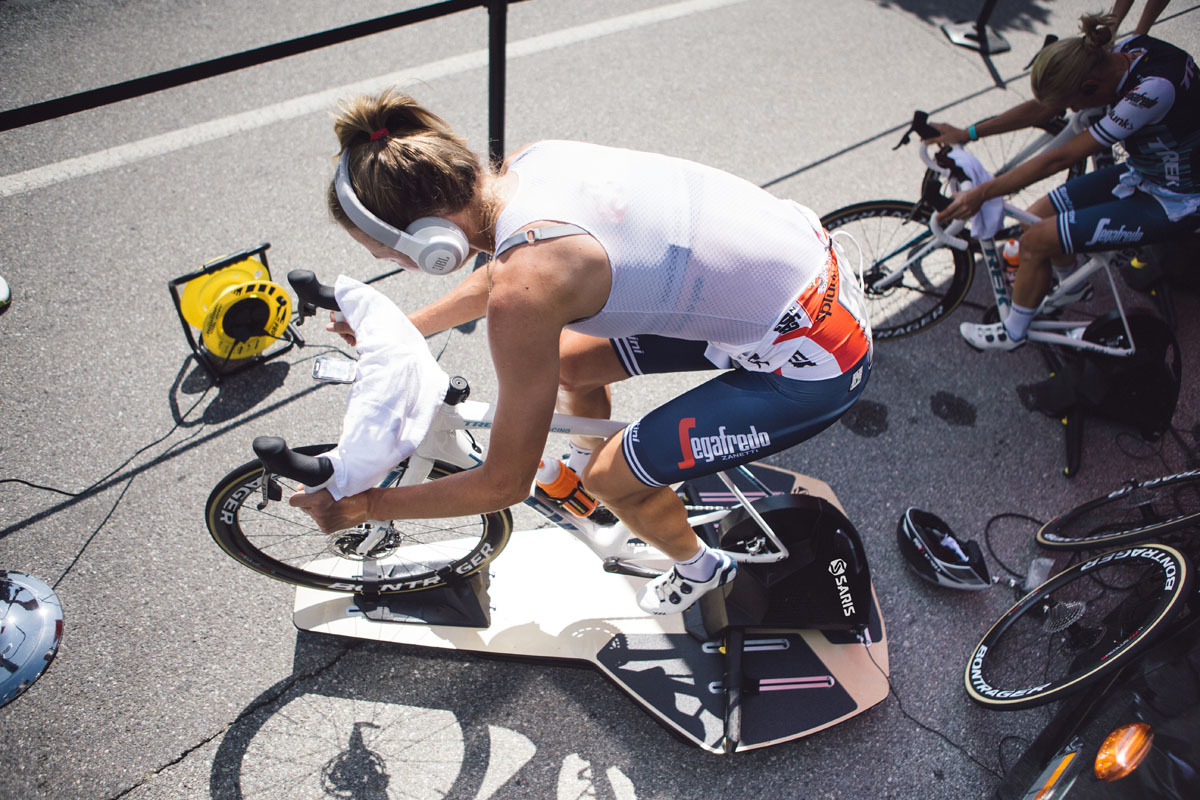
Also, a game changer for me was a trainer platform. I actually built my own to help understand how they work and why they help. The benefit of moving from a fixed position to one that is a little more dynamic when riding on the trainer really opened the door to more comfortable and longer indoor rides for me.
Every saddle I’ve used on the trainer has “killed” me, even though it may be comfortable on my regular bike. Do I need a totally different saddle?
Kyle – This is likely due to the static nature of indoor cycling. Stand up frequently to ensure that you’re not compressing any tissues for an extended period of time. If the pressure is “sharp” feeling, this is likely due to high pressure on the bone structure. If the pressure is causing numbness/tingling, consider a saddle that unloads the perineum more than the saddle you’re currently riding.
Kayla – Yes, don’t ever ride a saddle that is killing you. You might be a good candidate for a softer saddle. Remember weight doesn’t matter on a trainer!
Jason – Yeah you could even try a saddle such as the Bontrager Commuter Fluid Saddle that has built-in Fluid technology to help make riding more comfortable. It is definitely not a racing saddle, but the great thing about a trainer setup, like Kayla said, weight doesn’t matter. I ride the Bontrager Commuter Saddle exclusively when riding inside and love it, even though it isn’t the saddle I use when riding outside.
Alan – I think someone already mentioned this but, all Bontrager saddles come with a 30 day guarantee, so you can try one and make sure you love it.
Does a twin nose style saddle (like Adam) do better on a trainer than a conventional nose style saddle?
Kayla – I think this is users’ preference. If you like the split nose saddle on your regular bike, you will probably like it on a trainer. The split nose is for soft tissue relief which is necessary for indoor or outdoor riding. Again, since the trainer is stationary, you will probably move around more on a trainer than your actual bike. You will contact more of the saddle, so the soft tissue relief offered by a split nose saddle becomes even more important on a trainer.
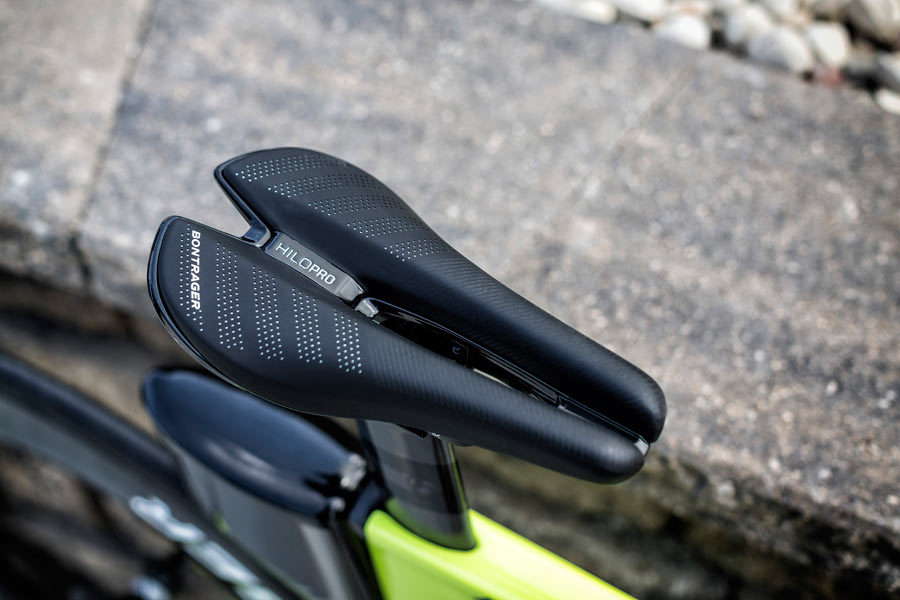
Kyle – Possibly. If you’re the type of rider that loads the nose of the saddle primarily, then yes, a split nose saddle such as Hilo is a good idea. If you’re sitting toward the back of the saddle how a road and MTB saddle is intended, then a split nose saddle is likely not the best choice. If a generous relief zone is what you seek, try Aeolus.
I ride an endurance bike and use a 27.5 cm long Specialized Toupe Expert Gel saddle. A bike fitter service set it for me, so I know that the saddle was 4.5cm offset from the bottom bracket and the height was 70.8cm. I bought a Bontrager Aeolus saddle. Should I copy the saddle position for indoor training or move it 1cm back with a 2 degree incline? I have a sore knee after ACL injury and don’t know if I have to preserve the saddle height or drop it a little.
Kayla – Overall, I would think you want to use the same fit on your trainer as you have on your road bike. I would not put an Aeolus RSL saddle at an incline, you usually want it at 0° or slightly negative. I would really recommend talking to your fitter about your knee though. Your body position can change pretty drastically, especially after an injury, so someone working directly with you will be able to get you the best answers and position.
Kyle – Yeah, unfortunately, this is difficult to answer without working directly with you. If you are trying to preserve the position of your pelvis relative to the pedals, then we recommend setting up the widest points of the saddles in the same place in space (height and fore-aft position).
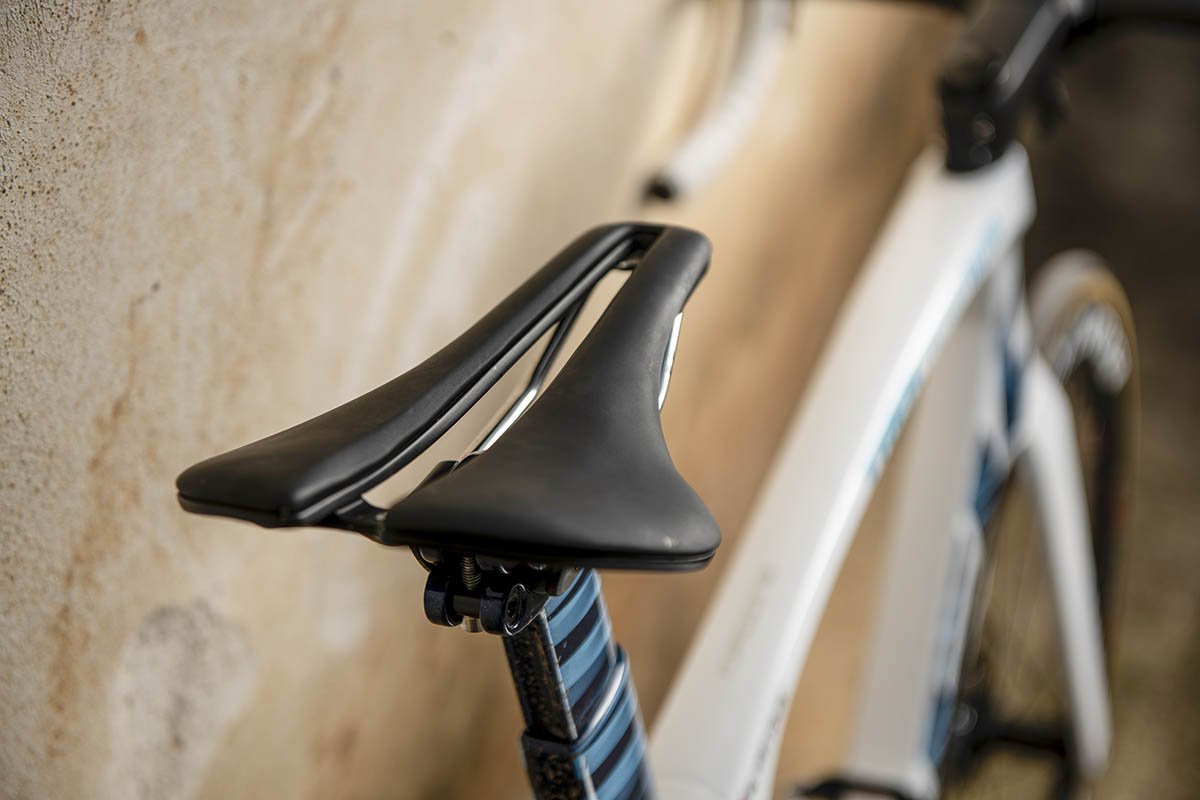
One way you can do this on your bike is to measure from the widest point of the Toupe to your handlebars and match that length for Aeolus. Ensure the saddle height is the same as well by measuring from the top, center of the saddle to the bottom bracket (or pedal if you prefer).
As for saddle tilt, we recommend that the midpoint of the saddle through the nose is horizontal. Download a bubble level app for your phone and plop it on the nose of the saddle to ensure it’s horizontal. You may need to tweak the tilt for your specific needs from there. Many fitters these days have pressure mapping capability to really optimize tilt and pressure. In real time you can see pressure points and how saddle position and a good fit can help eliminate them.
How do I match fit setup between bike inside vs. outside when using different saddles? Where should I measure two different length (width?) saddles to replicate the same fit?
Kayla – widest point on the saddle to stem reference point. Top of saddle at the widest point to the center crank axis.
How can I ensure I get the right saddle level and tilt angle for my turbo trainer setup?
Kayla – I always recommend starting with the same setup as your outdoor bike.
Kyle – The tilt of the saddle should help keep you in the intended position on the saddle. If you’re sliding toward the nose, the saddle may be tilted too far downward. If you’re getting unwanted perineal pressure (male and female) when sitting at the back of the saddle, you may want to tilt the nose downward.
A good rule of thumb to know where you are sitting on the saddle is to look down during the ride and make sure you can see at least 1-2cm of the saddle nose. If you cannot see the nose of the saddle and you’re not on a Tri/TT bike, it’s best to work on the saddle position to help you sit further back.
How does a rise at the tail end of the saddle affect riding on a trainer?
Kayla – The rise at the tail end should be rotating your hips and upper body forward. This should happen regardless of what bike your saddle is on.
Kyle – Yeah, the profile curvature (side view) at the back of the saddle helps rotate the pelvis forward, ideally for a neutral spine (no excess flexion or extension) and a powerful pedaling position (READ: USING YOUR GLUTES!). However, saddles with a lot of profile curvature take a good bit of tweaking to ensure the pelvis is stable, and not sliding forward on to the nose. See the saddle tilt question for setup help. Or better yet see a fitter with pressure mapping capability.
Should I use a different saddle for indoor riding than for outdoor?
Kayla – If you have a saddle you like for your outdoor bike, I would try that first on the trainer. If it’s uncomfortable, go for something softer, with more soft tissue relief. Bontrager has a 30 Day Guarantee on all saddles so try it out and make sure you love it. If you don’t you can take it back and exchange it.
Kyle – Only if needed… is that helpful? It may be in your best interest to do so. If you need more padding to reduce bone structure loading, go for it! No one can see your indoor saddle! And you aren’t climbing with it, so weight doesn’t matter. This said, make sure you’re not causing unwanted pressure on the more sensitive regions! Stick to the relief zone saddles!
Should I use a more padded, ticker padding saddle for the indoor trainer since I sit for longer?
Kayla – yes, I think softer padding on the sides of the saddle where your thighs contact become more important. Not just the top surface of the saddle.
Kyle – See above. I know we have said it before, but you aren’t riding outside and you aren’t climbing with this saddle, so weight doesn’t matter. A softer saddle than you normally ride is OK, especially if it makes you more comfortable.
Should there be a change in the fore or aft adjustment when riding on a trainer?
Kyle – Not unless the bike and therefore saddle height are different between bikes (example: Tri bike on trainer vs. Road bike outside).
I always thought gel saddles were for inexperienced riders, but now I see some premium saddles with gel inserts again to damp vibration. Would that help make me more comfortable on my indoor trainer sessions?
Kayla – vibration is not as prevalent on a trainer. That said, a saddle with a softer top surface will generally mean increased comfort while riding in a fixed position on a trainer.
Kyle – It may! Check out the Commuter Fluid! More padding can mean more comfort, especially on a stationary trainer. The Commuter Fluid has a Fluid layer that works better than gel at reducing pressures for more comfort.
Jason – Yeah, I swear by the Commuter Fluid saddle on my trainer. It is awesome.
How do saddles with a droop or curve in the design affect riding on a trainer?
Kayla – Since these saddles will encourage you to stay in that drooped area, and the trainer does not move the same way it does on a bike… you may be prone to less movement on the saddle and likely less comfort.
Kyle – Yeah a saddle with less of a drastic profile will let you move around more on the saddle as you ride, and will likely ultimately be more comfortable. The difference between the Bontrager Verse and the Bontrager Aeolus is a great example of this: Aeolus has more profile while the Verse is slightly more flat. On a trainer the Verse will be easier to move around on and find comfort in more positions.
Am I more likely to get chafing and need saddle/chamois cream riding indoors since I don’t vary my position as much while riding, and don’t get wind helping to keep me cool & vented? (Also since I tend to ride in my older shorts?) Does any of this impact how I should pick or setup my saddle inside?
Kyle – I’m glad you asked! Definitely do not skimp on the chamois indoors! Wear the best chamois/shorts that you have available that day! This is extremely vital because wicking sweat as you mentioned is paramount indoors! Personally, I ride inside next to a fully open window (in a Wisconsin winter!) AND with a powerful fan.
Managing sweat is vital. It helps prevent excess friction in the pelvic region, it helps you ride harder and further because your core temp and heart rate are lower, and it helps protect your bike from a deluge of salt on your components!
Jason – Agreed, always wear your good chamois when riding inside.
I’m running Bontrager Aeolus Elite saddle across all my bikes (road, gravel & turbo). Getting comfortable on turbo for >1hr duration is difficult. I find the saddle perfectly comfortable for long days outside. Anything I can do to adjust the position/saddle for indoor/turbo usage that will help with this? I know my movement during indoor sessions is more limited, but looking for some options.
Kyle – Try the Comp or Elite version if you’re not already using it. The Comp has a little more padding that can mean a little more comfort. Stand frequently. I always advise riders to look down while riding and make sure they can see daylight through the cutout. This ensures you’re sitting at the back of the saddle as intended.
Try tilting the nose down another 0.5 degrees to see if it unloads the problem area on the saddle. Ensure you’re sitting with a tall spine and engaging your glutes such that you’re not just passively weighting your entire upper body through your pelvis.
Your other random saddle questions answered!
Do Bontrager have a 3D printed saddle in the works to compete with the Fizik and Specialized printed saddles? Both of those saddles are getting great reviews in terms of comfort. Being partial to Trek and Bontrager, I’d prefer a Bontrager version of a 3D printed saddle.
Alan – maybe, maybe not. Ha! Yeah, we are always developing. As an industry leader in R&D, we are constantly looking for new and better ways to make saddles.
Why does the Bontrager seat post for the Trek Emonda have a 7mm x 10mm rotary clamp, with no option for a 7mm x 9mm? Is there no danger of damaging the 7mm x 9mm carbon rails of the saddles?
Kayla – All Bontrager Pro saddles have 7mm x 10mm rails and will all fit into the Emonda clamp. If you want to use a saddle from a different company that has 7mm x 9mm carbon rails, you will need to replace the clamp ears on your Emonda seat post. Part Number 406923 is for 7mm x 9mm ears that will work with an Emonda.
I have a problem with my glutes when ridding. I’m looking for a hollow (cut-out) type saddle to relieve pressure off my glutes when riding. Would you recommend any saddles of this type?
Kayla – I am not sure I fully understand this one. It sounds like you want there to be a space under your sits bones, and I am not sure that’s a good idea. There are plenty of good options for Bontrager saddles with cutouts for soft tissue relief. Aeolus (P2, race posture/road), Verse (P3, performance posture/MTB & trails), Hilo (P1, triathlon posture/ TT).
Why are saddles firm and shorts padded, instead of there being more padding on the saddle and less/none in the shorts? Is that just a historical convention or does it work better for some reason?
Kyle – The big reason is that the closer that soft layer is to your skin, the less of a chance there is for bunching of the material and corresponding discomfort. That and the softer layer will wear quicker. Think of your chamois. Over time it shows its age. That would happen a lot sooner if it was like a pillow top attached to your saddle, and it wouldn’t look great either.
This is probably a great time to restate how important a good chamois is for riding comfort. And to also remind everybody that a chamois is designed to be used right up against your skin. You should never wear underwear under your chamois.
Got a question of your own? Click here to use the AASQ form to submit questions on any cycling-related topic of your choice, and we’ll get the experts to answer them for you!
